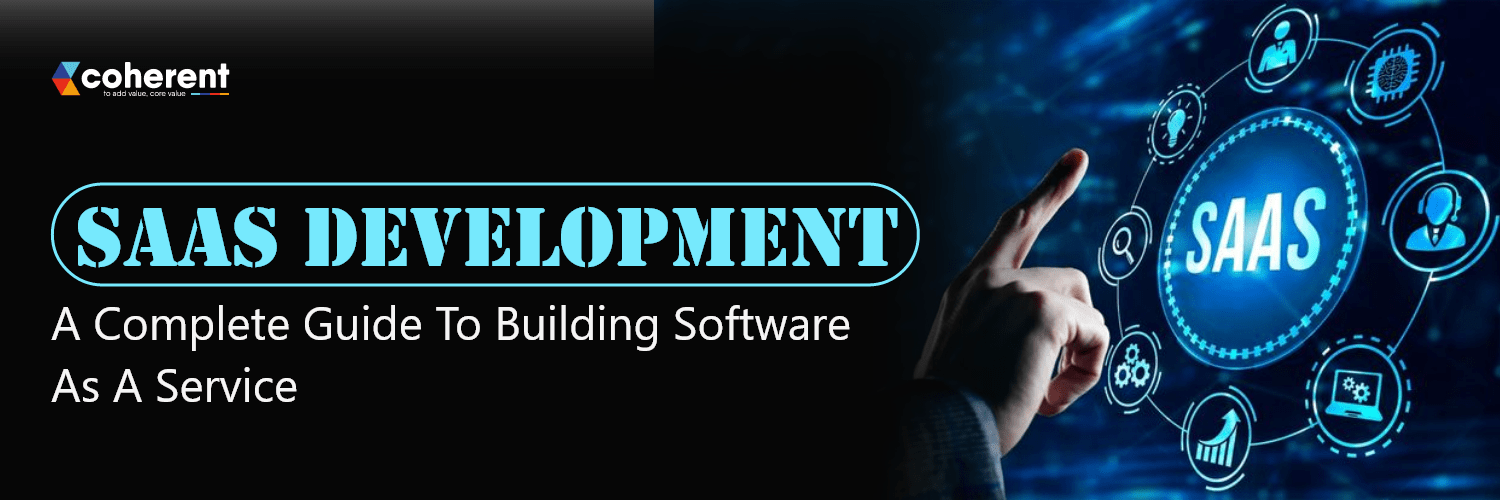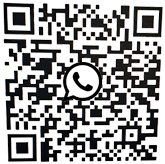SaaS Development: A Complete Guide to Building Software as a Service

Driven by the proliferation of smart devices and the expansion of both public and private cloud services, Software as a Service (SaaS) has rapidly become the preferred software delivery model in the U.S. With the U.S. SaaS market projected to reach $307.3 billion globally by 2026, this strategic segment now contends with a growing number of strong competitors. A Software as a Service can also be a smart investment, flexible, user focussed, and automated way to deliver a new generation of software solutions to American companies. This blog post examines SaaS types, benefits, and SaaS development process. So, let’s deep dive into it.
What is SaaS?
Scalable, On-demand, Cloud-native SaaS (Software as a Service) is a software delivery model that is hosted in the cloud, instead of sending data on an ongoing basis. Users may access services over the Internet through their web browsers. With SaaS development, no hardware needs to be maintained, upfront costs are kept low by paying a subscription fee, and automatic updates are provided. Companies use SaaS applications for CRM, project management, accounting and other activities too. Scalability, flexibility, and easy collaboration describe many SaaS applications, making them highly valuable in recent years by businesses searching for efficient software solutions, driving demand for expert partners like our SaaS development company. Now let’s understand more about SaaS.
Types of SaaS Applications
Here are the main types of SaaS applications:
Customer Relationship Management (CRM)
U.S. companies utilize CRM SaaS applications for effective customer engagement and to handle sales cycle and marketing strategy. The customer's interaction data is a part of an object, and it is stored in the Organization's CRM SaaS. Among American companies, Salesforce, HubSpot, and Zoho CRM are leading in using CRMs to support their business and keep ahead of the competition through customer relationships, with many based on adapted SaaS development services to enhance and integrate these platforms effectively.
Enterprise Resource Planning (ERP)
American businesses often have the majority of their processes tied to traditional methods. ERP SaaS platforms allow U.S. businesses to integrate their enterprise systems, including finance, human resources, stock, and vendor management, into a single solution. U.S. companies implement ERP to gain a more efficient way of working, ensure the accuracy of their data, and comply with standards. Common ERPs in the U.S. include NetSuite and SAP Business ByDesign, which offer enterprise clients the benefits of process optimization and compliance.
Collaboration and Communication Tools
Collaboration SaaS tools can offer businesses a unique way to interact in real-time, communicate, share files and collaborate as a team too as well. For U.S. companies tools like Slack, Microsoft Teams and Zoom offer valuable ways to engage, collaborate virtually and reduce reliance on email—often with enhancements or customizations from a SaaS development agency too.
Read More: Unlocking the Power of Open Source Cloud Applications: Benefits and Future Trends
SaaS Development Benefits
Let’s check out some amazing benefits of SaaS development:
Recurring Revenue
SaaS companies in the U.S. typically start under a subscription billing model, providing them with consistent income and predictable financial performance metrics. Compared to traditional software sold in a one-time transaction, recurring revenue offers financial stability when planning a growth strategy as a founder, and depending on seasonal demand patterns from U.S. industries. As analyzed for trends in customer use, the vendor reinvests for growth with planned forecasting, which generally informs a better strategic direction.
Ease of Deployment
Compared to traditional software, a SaaS application development company requires less deployment time and cost to enter the U.S. market. With cloud delivery options the vendor can quickly reach the end-user and velocity towards revenue generation may be faster. Maintenance and upgrades can be planned for by the vendor, as well as the delivery of added-value training and analytics services that lower operational costs related to support, thereby improving the U.S. customer experience which is often enhanced through outsourcing SaaS development.
Scalability
SaaS companies based in the United States typically build their platform with cloud-native, reusable platforms and APIs. The reusable architecture allows startups to scale or add capabilities with minimal development costs and development time, providing a key competitive advantage and enabling rapid response to shifting market demands. Scalability also provides faster growth prospects while retaining scalability performance and meeting the expectations set by American businesses and consumers. These are some benefits that our iOS app development company in USA is proud to deliver.
SaaS Development Process
A successful go-live of a SaaS app requires careful planning and execution; it typically consists of the following steps for the SaaS development process:
Market Research & Idea Validation
Study your target market, audience, industry, and competitors. Understand service gaps, and confirm whether you will be solving a specific problem with a real product or service through surveys, interviews, or MVP tests. By taking these first steps—especially when planning custom SaaS development—you significantly reduce the chance of building something that nobody wants or needs.
Identify Requirements & Features
Make a list of the required features and technical requirements for your SaaS development framework. You should focus on capabilities that are important to the user like account management, subscriptions and analytics. Use prioritization methods to establish what to build first and redesign the features concerning the business goal and users' expectations to create a framework for developers. So, the developers need to have a clear sense of the order of tasks to be performed.
Choose the Right Tech Stack
Choose technologies that support scalability, speed, and security. Frontend choices include React or Angular, with backend choices being Node.js or Django. For databases, we recommend you use either PostgreSQL or MongoDB. Lastly, use AWS, Google Cloud, or Azure for cloud hosting and to effectively manage resources and scaling on the back end.
UI/UX Design
Create a logical user interface that is visually engaging, satisfying, and easy for people to use. Always design user interfaces with ease in mind. Just remember to be responsive, but aim for a frictionless, delightful, and memorable onboarding experience. Use design tools like Figma or Adobe XD to create your user interface mocks. Complete the prototype experience by ensuring a consistent and engaging experience across all of the users' devices.
Develop the MVP
Develop a minimum viable product that has only the critical features in order to test the idea quickly. Use responsive development methodologies and gather as much continuous feedback as possible. Don’t be too concerned about polish; instead, focus on functionality, performance, and time to market the product as quickly as possible to listen to real user feedback and refine based on that feedback given by early adopters.
Implement Security & Compliance
You should incorporate security such as encryption, multi-factor authentication, and APIs (secure, of course) into your data protection considerations, and be very mindful of industry-specific regulation alignment such as GDPR, HIPAA, PCI DSS, etc. When it comes to trust with users, you must incorporate security and compliance to ensure that trust exists. This is even more critical if you are processing sensitive or financial data.
Testing & QA
Test your app thoroughly on all levels such as Unit testing, integration testing, and end-user testing. Use manual QA testing as well as automated QA testing to test the functionality and reliability of your app with real users. Quality testing helps manage your technical debt and allows you to guarantee stability and safety for your users in a live environment.
Launch & Deployment
Release your application through CI/CD (continuous integration/continuous delivery) workflow for a low-effort, zero-fault release. Use cloud infrastructure for availability and scalability. If your app is significant, consider a limited (or soft) launch or beta release to approach early user feedback on the product to enhance improvements before deploying the full version to a larger user base.
Monitor & Improve
Post-launch, keep monitoring system health, usage, and performance with monitoring systems such as Datadog, Mixpanel, or Google Analytics. Leverage this information to evaluate performance, address issues, enhance features, and support updates. Regular updates based on real feedback are crucial for ongoing success beyond the initial SaaS product launch. These are the services that an experienced android app development company in USA can support effectively.
Also Read: Cloud-Based App Development: Everything You Should Know
Wrapping Up
SaaS platform development is rapidly increasing in the United States, and being experienced professionals, we focus on SaaS development that is of actual value and profitable, not trends. With our vast knowledge of the industry and exceptional skills we design specialized solutions that are suited to the U.S. competitive market. Collaborate with us, a trusted mobile app development company in USA, to build a leading SaaS platform that makes your business special, pleases your customers, and supports your future success. Begin your SaaS experience now and get the most out of your software product.
Frequently Asked Questions (FAQs)
Q1. How much does it typically cost to develop a SaaS product?
Saas production could be cheaper or more expensive depending on its features, the level of its complexity, and where the team works. Most simple, basic SaaS applications are developed for between $50,000 and $150,000. When companies add advanced integrations, authentication, and security, the product might cost over $300,000.
Q2. How long does SaaS development take?
For an MVP (minimum viable product), it will take between 2-12 months to develop and then develop a SaaS app. It might also go longer than that: for more complex apps like commercial-grade SaaS apps. Since they have more developers involved as well as greater complexity, it might be as much 6–12+ months.
Q3. Can SaaS be customized for specific industries?
Yes, SaaS can be customized for specific sectors. Customization likewise enables businesses to adapt software solutions to their unique workflows and industry-specific requirements. "Adapting" programming could consist of getting support, changing interfaces, or constructing entirely new features that are not available in the off-the-shelf version.
Q4. What tech stack is best for SaaS development?
You have plenty of popular frontend (React/Angular) and backend (Node) stacks to choose from when deciding on a SaaS stack such as JS, Django, or Ruby on Rails. For databases, you can choose either PostgreSQL or MongoDB. For cloud providers, options such as AWS, Azure, or Google Cloud are popular. The factors deciding are generally – which of the stacks/services are costlier, are they scalable, secure, or what your development team is comfortable with.
Q5. How do you ensure data privacy in SaaS?
In SaaS, encryption, strong authentication, multi user checks, and compliance with regulations like GDPR, HIPAA are some of the ways to ensure your data privacy. You can also secure your data by implementing role-based access control, securitizing your APIs, protecting your data, and managing with tight monitoring around it to act rapidly when and if something happens.


 +91 774-202-1725
+91 774-202-1725
 +1 (945) 3387904
+1 (945) 3387904
 business@coherentlab.com
business@coherentlab.com +49 15223341304
+49 15223341304 UK
UK

